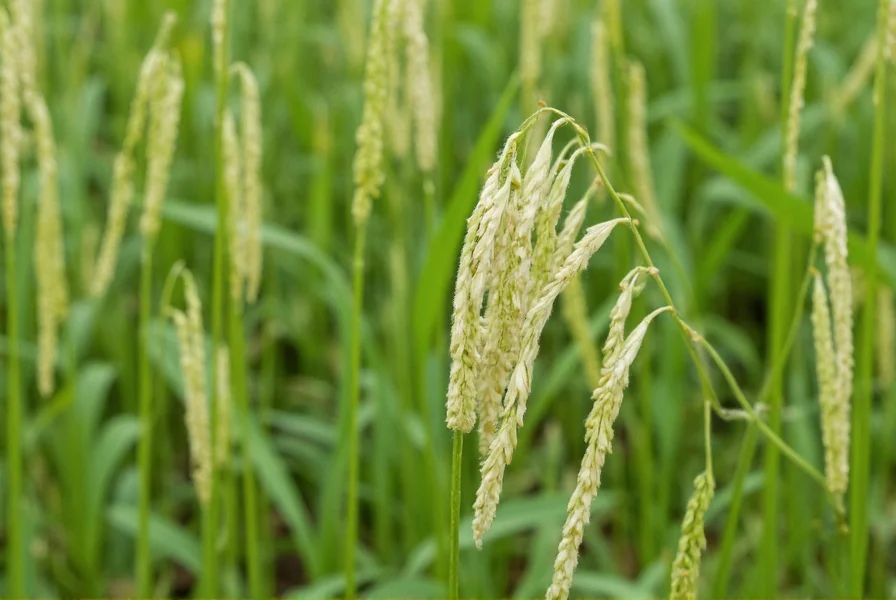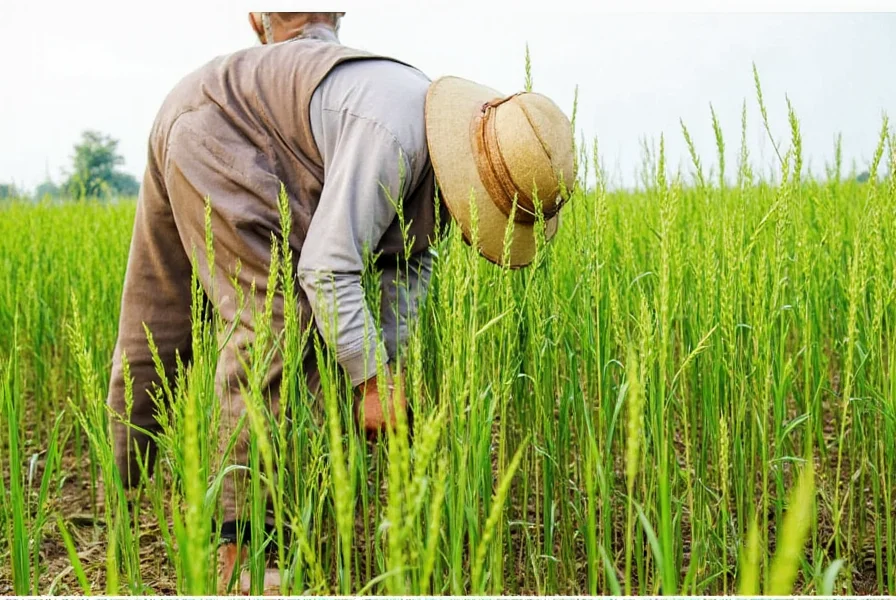The sesame plant represents one of humanity's oldest cultivated crops, with archaeological evidence suggesting domestication began in the Indus Valley around 3500 BCE. This resilient annual plant belongs to the Pedaliaceae family and thrives in tropical and subtropical climates worldwide. Understanding sesame plant cultivation requirements is essential for both commercial growers and home gardeners interested in this versatile crop.
Botanical Characteristics of Sesame Plants
Sesamum indicum features a distinctive growth pattern that makes it easily identifiable. The plant typically reaches heights between 50-100 cm (20-39 inches), though some varieties can grow up to 180 cm (71 inches) under optimal conditions. Its leaves are broad and lance-shaped, arranged oppositely on the stem during early growth and alternately as the plant matures.
One of the most remarkable features of the sesame plant is its flowering habit. The tubular flowers appear in the leaf axils and can be white, yellow, pink, or purple depending on the variety. These flowers only remain open for a single day, typically blooming in the morning and wilting by afternoon. Following pollination, the flowers develop into distinctive rectangular seed capsules that split open when ripe—a characteristic known as dehiscence.

Historical Significance and Global Distribution
Sesame holds a unique place in agricultural history as one of the first crops processed for oil. Ancient Egyptians and Babylonians valued sesame oil for cooking, religious ceremonies, and medicinal purposes. The famous phrase "open sesame" from Arabian folklore references the plant's distinctive seed pods that burst open when ripe.
Today, sesame cultivation spans more than 100 countries, with major production occurring in:
| Top Sesame Producing Countries | Annual Production (Metric Tons) | Primary Growing Regions |
|---|---|---|
| Sudan | 700,000 | Kordofan, Darfur |
| Myanmar | 650,000 | Mandalay, Magway |
| India | 600,000 | Rajasthan, Gujarat |
| Tanzania | 300,000 | Dodoma, Singida |
| Burkina Faso | 250,000 | Centre-Nord, Sahel |
Optimal Growing Conditions for Sesame Plants
Successful sesame plant cultivation depends on understanding its specific environmental requirements. The plant demonstrates remarkable drought tolerance once established but requires careful attention during germination and early growth stages.
Climate requirements:
- Temperature: Sesame thrives in warm conditions with optimal growth between 25-35°C (77-95°F)
- Frost sensitivity: Complete intolerance to frost; requires 120-150 frost-free days for full maturity
- Humidity: Prefers moderate humidity; excessive moisture increases disease risk
Soil preferences:
- Soil type: Well-drained sandy or loamy soils (pH 5.5-8.0)
- Water requirements: Moderate during establishment, low once mature
- Fertility needs: Moderate; excessive nitrogen promotes leaf growth at expense of seed production
Understanding sesame plant water requirements is crucial—while mature plants are drought-tolerant, inconsistent watering during flowering and pod formation significantly reduces yield. The ideal sesame plant growing season coincides with warm, dry periods following initial establishment.
Cultivation Practices and Harvesting Techniques
Commercial sesame production follows specific practices to maximize yield and quality. Farmers typically plant sesame seeds 1-2 cm deep after the last frost, with spacing of 30-60 cm between rows depending on equipment and variety.
The critical period for sesame plant care instructions occurs during the first 4-6 weeks after planting. During this time, weed control is essential as sesame grows slowly initially and cannot compete effectively with weeds. Once established, the plant's rapid growth helps suppress weed development.
Harvesting sesame seeds presents unique challenges due to the plant's tendency for uneven ripening and pod shattering. Modern harvesting techniques include:
- Single-pass mechanical harvesting when 50-60% of pods have turned brown
- Two-stage harvesting: cutting plants and allowing them to dry in windrows before threshing
- Using desiccants to promote uniform drying and reduce shattering losses
Timing when to harvest sesame seeds is critical—waiting too long results in significant seed loss from pod shattering, while harvesting too early yields immature seeds with lower oil content.

Nutritional Profile and Culinary Uses
Sesame seeds contain approximately 50-60% oil and 20% protein, making them nutritionally dense. They're particularly rich in:
- Healthy fats (primarily polyunsaturated and monounsaturated)
- Calcium (90mg per tablespoon)
- Magnesium (32mg per tablespoon)
- Iron (1.3mg per tablespoon)
- Vitamin B1 (thiamine)
The benefits of sesame seeds extend beyond basic nutrition. Sesame oil contains natural antioxidants like sesamol and sesamin that contribute to its exceptional shelf stability. In traditional medicine systems across Asia and Africa, sesame has been used for centuries to support skin health, reduce inflammation, and promote cardiovascular wellness.
Culinary applications vary globally:
- Middle Eastern cuisine: Tahini (sesame paste) for hummus and baba ganoush
- Asian cuisine: Toasted sesame oil for flavoring and sesame seeds as garnish
- African cuisine: Sesame paste in stews and sauces
- Mediterranean cuisine: Halva and other confections
Common Challenges in Sesame Cultivation
Despite its drought tolerance, sesame production faces several challenges that affect yield and quality:
Disease management: Fusarium wilt, bacterial leaf spot, and phytophthora blight can significantly impact crops. Crop rotation with non-host plants remains the most effective prevention strategy for sesame plant disease control.
Pest concerns: Aphids, whiteflies, and sesame webworm can damage plants. Integrated pest management approaches work best for sesame plant pest control without compromising seed quality.
Harvest difficulties: The plant's tendency for uneven ripening and pod shattering makes mechanical harvesting challenging. Researchers are developing non-shattering varieties to address this longstanding issue in commercial production.
Emerging Research and Future Prospects
Modern agricultural research focuses on improving sesame varieties through both traditional breeding and biotechnology approaches. Key areas of development include:
- Non-dehiscent (non-shattering) varieties to reduce harvest losses
- Drought-tolerant strains for marginal agricultural lands
- Varieties with enhanced oil profiles for specific industrial applications
- Disease-resistant cultivars to reduce chemical inputs
As global interest in sustainable, drought-tolerant crops increases, the sesame plant's importance in agricultural systems is likely to grow. Its ability to produce high-value seeds with relatively low water requirements makes it an excellent candidate for climate-resilient farming systems.
Frequently Asked Questions
How long does it take for a sesame plant to mature?
Sesame plants typically require 90-150 days to reach full maturity, depending on the variety and growing conditions. Most commercial varieties mature in 120-130 days from planting. The growing season must include sufficient warm, dry weather for proper seed development and ripening.
Can sesame plants grow in containers or home gardens?
Yes, sesame plants can successfully grow in containers or home gardens in warm climates. Choose a dwarf variety if space is limited, and ensure containers are at least 12 inches deep. Provide full sun exposure and well-draining soil. Home gardeners should note that sesame requires warm temperatures (above 70°F/21°C) and may not mature properly in cooler climates with short growing seasons.
What are the signs that sesame seeds are ready for harvest?
Sesame seeds are ready for harvest when the lower pods turn brown or yellow while the upper pods remain green. The plant will begin to yellow overall, and the leaves may start to drop. The critical indicator is that the lower seed pods become dry and start to split open. Harvesting should occur before most pods have split to prevent seed loss from shattering.
How much water does a sesame plant need?
Sesame plants require consistent moisture during germination and early growth (first 3-4 weeks), needing about 1 inch of water per week. Once established, they become highly drought-tolerant and require minimal irrigation. Overwatering during flowering and pod formation can cause excessive vegetative growth and reduce seed yield. In general, sesame needs approximately 350-400 mm (14-16 inches) of total water throughout its growing season.
What are the main differences between white and black sesame seeds?
White sesame seeds have had their outer husk removed, revealing the pale interior, while black sesame seeds retain their dark outer coating. Black sesame seeds generally contain higher levels of certain nutrients, particularly calcium and antioxidants. White sesame seeds have a milder flavor and are commonly used in baking and confectionery, while black sesame seeds have a stronger, nuttier taste and are frequently used in Asian cuisine and traditional medicine.










 浙公网安备
33010002000092号
浙公网安备
33010002000092号 浙B2-20120091-4
浙B2-20120091-4